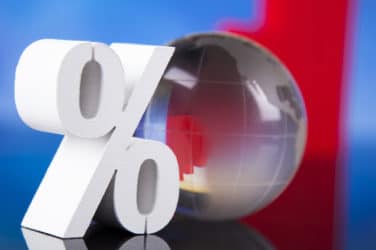The World Federation of Exchanges, which represents more than 200 market infrastructure providers including exchanges and CCPs, today published its H1 2017 Market Highlights report.
Market performance in the first half of 2017 was mixed. Overall, domestic market capitalisation reached record levels. Listings were also up on the same period. Secondary market activity was muted, with volume and value of shares traded, investment flows, and volumes of derivatives traded down on H1 2016.
KEY HIGHLIGHTS:
- Global market capitalisation was up 16.3% on June 2016.
- Value of share trading and the number of trades declined by 9.1% and 12.2% as compared to H1 2016.
- The total number of new listings was up 44.1%, and investment flows through IPOs were up 109.8%.
- The total value of investment flows (which includes IPOs and capital raises by already-listed firms) was down 2.7% on H1 2016.
- Exchange Traded Derivatives (ETD) volumes ended the year 5% down on H1 2016, driven by declines in volumes of stock index futures, currency futures and commodity futures.
According to the WFE’s half-year statistics, the key trends of H1 2017 when compared to H1 2016 were as follows:
- Total domestic market capitalisation increased by 16.3% to reach a record level of US$78.2 trillion. This is the highest market capitalisation recorded for this universe of exchanges in the period under review (since 2012).
- The Americas saw domestic market capitalisation increase by 14.1% to reach a record high of US$33.2 trillion. In the USA, which accounts for 88% of the market capitalisation in the region, the increase was against a backdrop of positive economic data, increased consumer confidence, and anticipation of favourable tax and regulatory reform from the new government
- The Asia-Pacific and EMEA regions also saw increases in market capitalisation on H1 2016 of 18.1% and 17.7% respectively.
The overall value and volume of share trading was down 9.1% and 12.2% on H1 2016. This was due to declines in volume and value traded in all three regions:
- Value traded: Americas (-8.8%), Asia-Pacific (-11.3%) and EMEA (-5.2%).
- Volume traded: Americas (-25%), Asia-Pacific (-6.1%) and EMEA region (-1.7%).
- It is interesting to note that in this period, while the Americas accounted for 51% of the value traded, they accounted for only 19% of the volume traded; the Asia-Pacific region meanwhile accounted for 34% of the value traded, but 60% of the total volume traded.
The total number of new listings saw a comeback, with a 44.1% increase on H1 2016.
- The increase was particularly pronounced in the Asia-Pacific region (up 62.9%) where 73% of these new listings took place. Of these, over 50% were on mainland Chinese exchanges where the regulator had accelerated the process of IPO approvals after a relatively stable stock market over the past year. Also, 2017 started on a positive note economically for China with expansion in industrial output and retail sales driving GDP growth rate above the target level to 6.9% in H1 2017. Australia, India and other emerging market economies in the region similarly saw an increase in new listings.
- The listings environment in the Americas and the EMEA regions also improved, with increases in the number of new listings of 31.5% and 7.3% on H1 2016 respectively.
In line with the increase in new listings, investment flows through IPOs were also up across all three regions on H1 2016. However, despite this increase in IPOs, the decline in non-IPO investment flows (which account for 80% of investment flows) was such that total investment flows were down 2.7% on H1 2016.
- In the Americas, the decline in non-IPO investment flows (down 7%) was countered by the rebound from investment flows through IPOs (up 294.3%), leading to a 15.1% increase in total investment flows on the same period in 2016. The USA, where nearly 70% of investment flows from IPOs originated, saw the year begin with some large, much anticipated IPOs across various sectors such as Snapchat (IT), Altice USA Inc. (Media), Gardner Denver Holdings (Industrials) and Antero Midstream (Energy). The investment flows were further boosted by record high levels of the market indices, stable economic indicators, strong job growth and improving corporate earnings.
- In the Asia-Pacific region, while investment flows through IPOs were up on H1 2016 (up 125%) non-IPO investment flows were down 5.2%. This resulted in an overall 7% increase in total investment flows. In mainland China where over 60% of these investment flows originated, the increases in flows were against backdrop of positive economic news driving flows which to some extent were stifled by state-led deleveraging and tightening in funding markets since the beginning of 2017. Exchanges in Australia, India and other emerging market economies in the region also experienced a significant pickup in total investment flows over this period.
- Finally, while the EMEA region saw investment flows through IPOs increase by 11% on H1 2016, the 29.2% decline in non-IPO investment flows resulted in a 25.3% decline in total investment flows. Over 80% of the investment flows originated in Europe where H1 2017 was characterised by low market volatility, an accommodative monetary policy and positive growth in equity indices.
Exchange Traded Derivatives (ETD) volumes overall were down 5% on H1 2016, driven by falls in volume traded in stock index futures, currency futures and commodity futures.
- Index futures volumes traded were down 13.2% on H1 2016, due to decreases in all three regions.
- Currency futures, which account for over 80% of the currency derivatives contracts traded, saw volumes traded decline by 20.1%, driven by significant declines in the Asia-Pacific (down 25.4%) and EMEA (down 27.3%) regions. Only the Americas, which accounts for a relatively small share of volume traded (about 25%) experienced an increase in volume traded (up 15.4%).
- Commodity futures, which represent over 95% of the commodity derivatives contracts traded, saw volumes fall by 24.1%. This decline was entirely attributable to the Asia-Pacific region, which accounts for nearly 60% of the volume traded, and where number of contracts traded was down -36.1% on H1 2016. The Americas and the EMEA regions recorded increases in volume traded of 2.5% and 9% respectively on H1 2016. Despite these falls in volumes, commodity futures remained the most actively traded contract type in H1 2017.
The performance of other derivatives product volumes was as follows:
- Stock options and single stock futures were up 2.8% and 4.6% respectively.
- Index options were up 13.2%.
- Interest rate futures (which account for 95% of IR derivatives contracts) were up 19.2%, and interest rate options up 24.7%.
- Currency options were up 23.3%.
- Commodity options were down 1.5%.
Nandini Sukumar, CEO, WFE said: “It’s a mixed picture of market performance. Market capitalisation rose, and there was a strong resurgence of IPOs, and investment flows through IPOs. Simultaneously, however, the volume and value of share trading fell, and the decline in non-IPO investment flows was such that total investment flows were actually down on H1 2016, further demonstrating the unpredictable nature of primary and secondary markets in an uncertain global geopolitical landscape.”
“As ever, the derivatives story is characterised by some significant peaks and troughs,” added Siobhan Cleary, Head of Research & Public Policy, WFE.“For example, all three regions saw volumes of commodity futures decline, yet despite this, the product remained the most actively traded contract type during the period.”
Click here to read the WFE H1 2017 Market Highlights report in full.
Source: WEF





